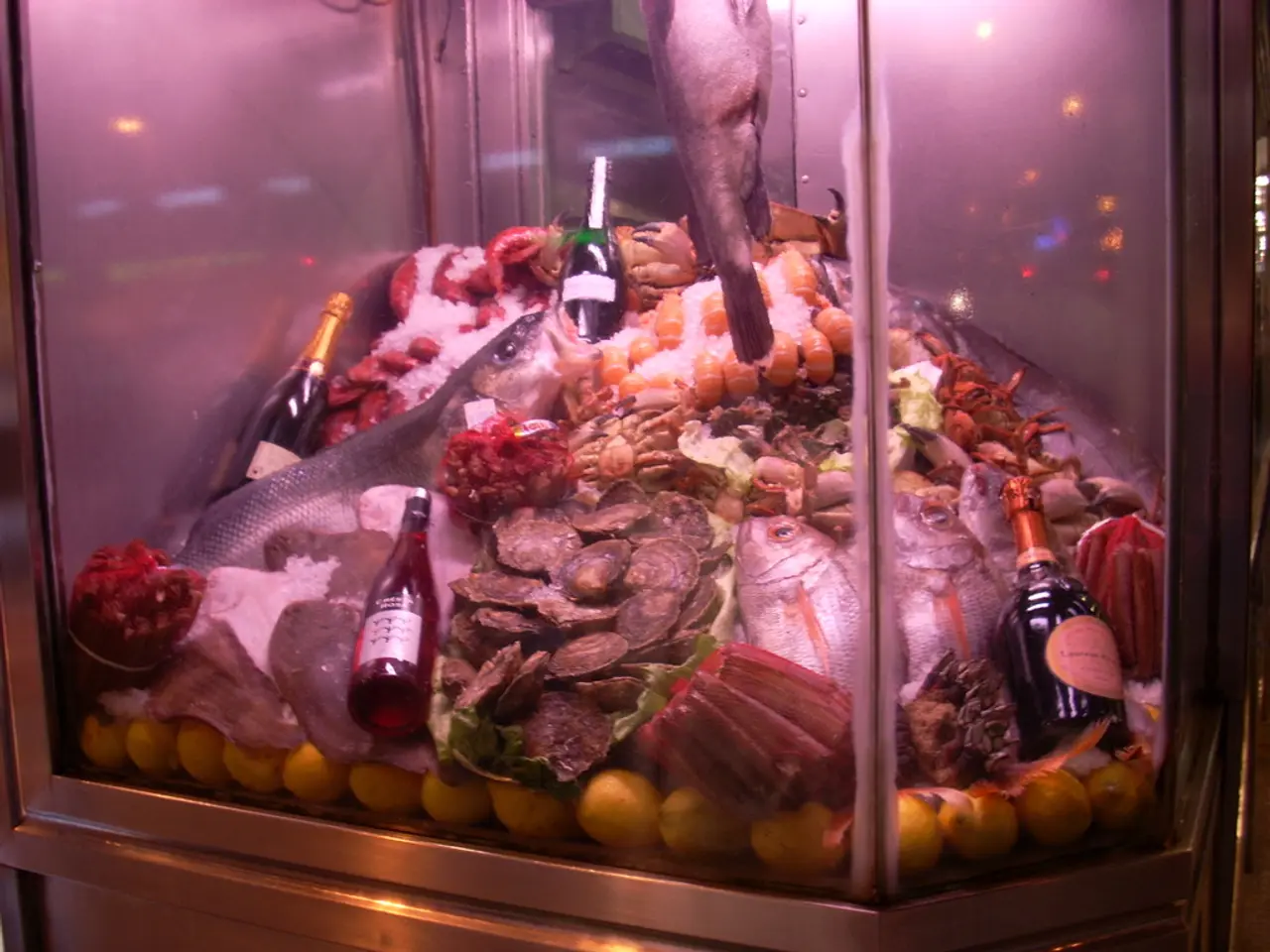Protective Strategies for Ocean Preservation: A List of Ten
The health of our oceans, which cover an astonishing 70% of the Earth's surface, is under threat due to human activities such as overfishing, pollution, and marine life depletion. However, there are several evidence-based strategies that can help to safeguard marine life and protect the ocean for future generations.
**Utilization of Advanced Monitoring Technologies**
One of the most effective approaches is the utilization of advanced monitoring technologies. Remote sensing and satellite imagery enable continuous surveillance of vast ocean areas, tracking changes like sea temperature rise and harmful algal blooms. High-resolution imagery helps identify coral bleaching events early and supports the protection of key habitats [1]. Autonomous underwater vehicles (AUVs) collect images, water samples, and monitor wildlife health without disturbing the environment. They are especially useful in difficult-to-access regions and for studying marine animals [1].
**Establishment and Management of Marine Protected Areas (MPAs)**
Establishing and managing Marine Protected Areas (MPAs) is another crucial strategy. MPAs restrict human activities such as fishing and resource extraction in designated zones, allowing ecosystems to recover and thrive. Studies show increased fish populations and healthier coral reefs within these protected zones [2][3]. Community-led conservation initiatives, which often combine traditional knowledge with modern conservation practices, have proven to be particularly effective [2][4].
**Sustainable Fishing Practices**
Implementing sustainable fishing practices is essential for maintaining healthy fish stocks. Catch quotas and regulations help prevent overfishing and allow fish stocks to replenish [2][3]. Community-based management, which engages local stakeholders in monitoring and enforcement, increases compliance and fosters stewardship, leading to better long-term outcomes [2][3].
**Reduction of Pollution and Marine Debris**
Reducing pollution and marine debris is another critical aspect of marine conservation. Waste reduction initiatives, such as cutting down on plastic use, properly disposing of waste, and conducting regular beach cleanups, play a significant role in this [2][3]. Education and outreach efforts, which raise awareness about the impacts of pollution and encourage sustainable consumer choices, are essential for lasting change [2][3].
**Integration of Indigenous and Local Knowledge**
Integrating indigenous and local knowledge into conservation efforts is also vital. Traditional conservation practices, such as customary closures and seasonal harvests, are highly effective and culturally grounded [4]. Conservation efforts that respect and integrate both scientific and traditional knowledge yield more resilient and inclusive results [4].
**Supporting Actions**
Citizen science and volunteerism, international agreements and policies, capacity building and education, and collaboration between Western science and indigenous wisdom are all essential supporting actions [2][3][4][5].
By combining these strategies—technology, protected areas, sustainable fishing, pollution reduction, and community engagement—it is possible to make significant progress in safeguarding marine life and preserving the health of our oceans.
Individuals can contribute to marine conservation by reducing their consumption, repairing items instead of replacing them, using energy-efficient appliances, educating themselves about ocean welfare and marine life, picking up garbage wherever they find it, leaving no litter in the water, sharing knowledge about ocean conservation with others, avoiding seafood products or choosing sustainable options, joining local marine conservation societies, and voting for government officials who prioritize preserving nature for future generations.
The ocean is crucial for life, providing the water we drink, the air we breathe, and supporting the entire ecosystem. Let us all do our part in protecting this vital resource for the benefit of future generations.
References: [1] National Oceanic and Atmospheric Administration (NOAA). (n.d.). Ocean Exploration and Research. Retrieved from https://oceanservice.noaa.gov/ [2] United Nations Environment Programme (UNEP). (n.d.). Marine Protected Areas. Retrieved from https://www.unep.org/ [3] World Wildlife Fund (WWF). (n.d.). Marine Life Conservation. Retrieved from https://www.worldwildlife.org/ [4] International Union for Conservation of Nature (IUCN). (n.d.). Traditional and Local Knowledge. Retrieved from https://www.iucn.org/ [5] United Nations. (n.d.). Sustainable Development Goal 14: Life Below Water. Retrieved from https://www.un.org/sustainabledevelopment/oceans/
- Participating in a underwater photography contest could raise awareness about the health of our oceans and inspire others to embrace sustainable living, contributing to the preservation of marine life.
- A guide for home-and-garden lifestyle changes could emphasize the importance of reducing plastic waste, which would help decrease pollution and marine debris, benefiting the environment and marine life.
- As a supporter of environmental-science, you could advocate for policies that prioritize the effective use of advanced monitoring technologies like AUVs, satellite imagery, and remote sensing in ocean conservation efforts.
- A lifestyle blog focused on sustainable living could discuss the positive impact of community-led initiatives in marine conservation, encouraging its readers to get involved in local marine-protecting initiatives.
- By showcasing images of thriving marine life within Marine Protected Areas (MPAs) in a coffee table book, you could emphasize the value of protecting these special ecosystems and inspire others to take action in conservation efforts.




